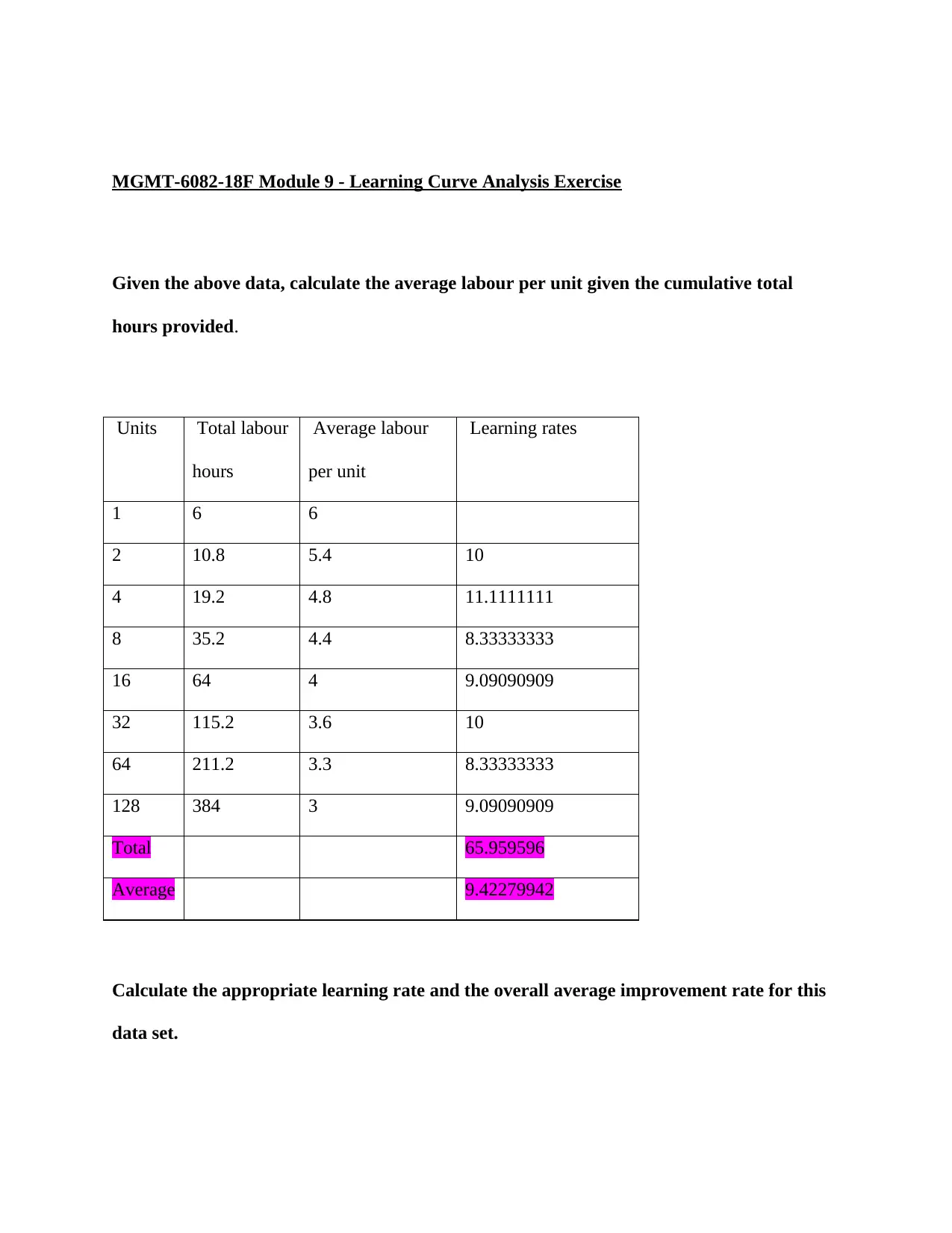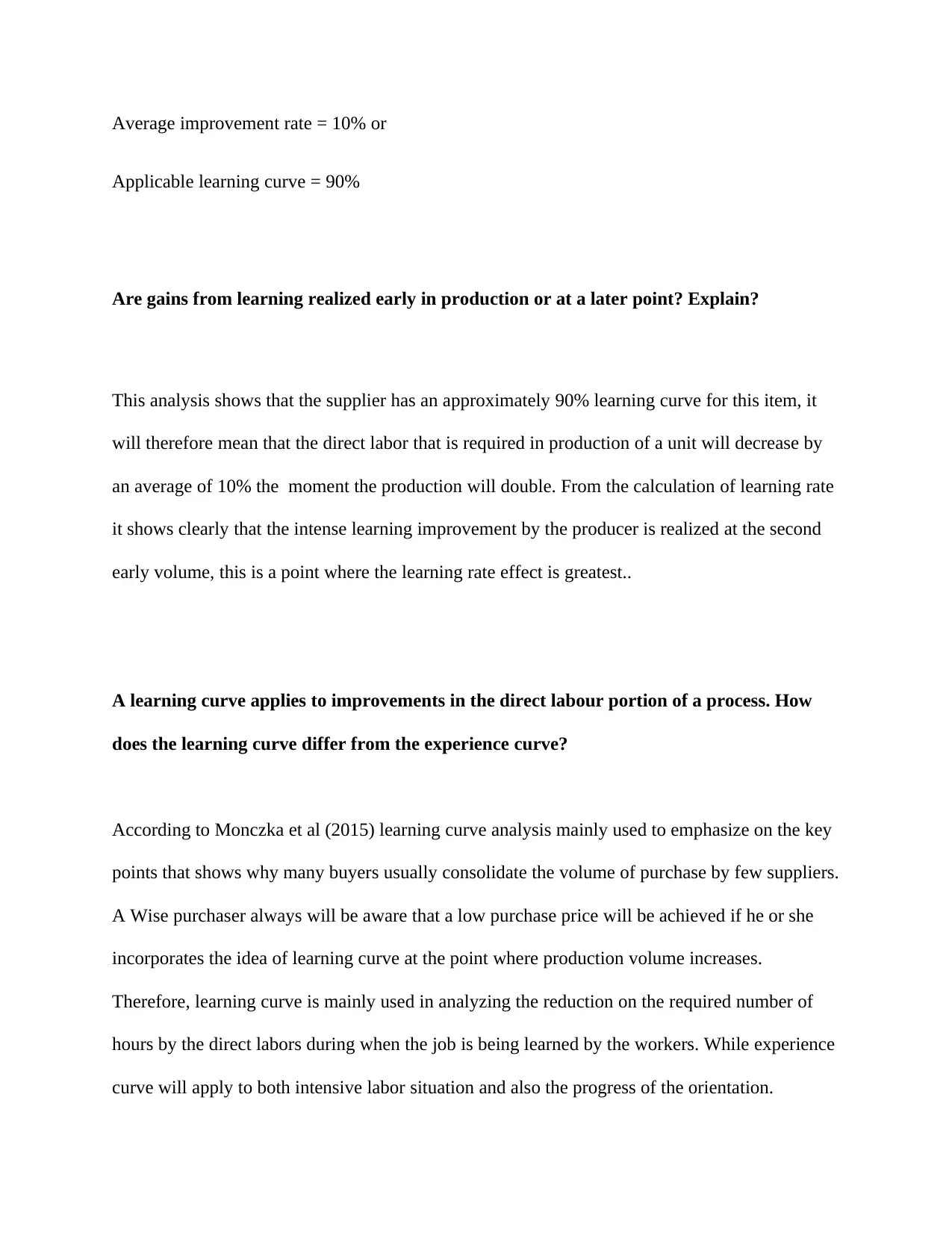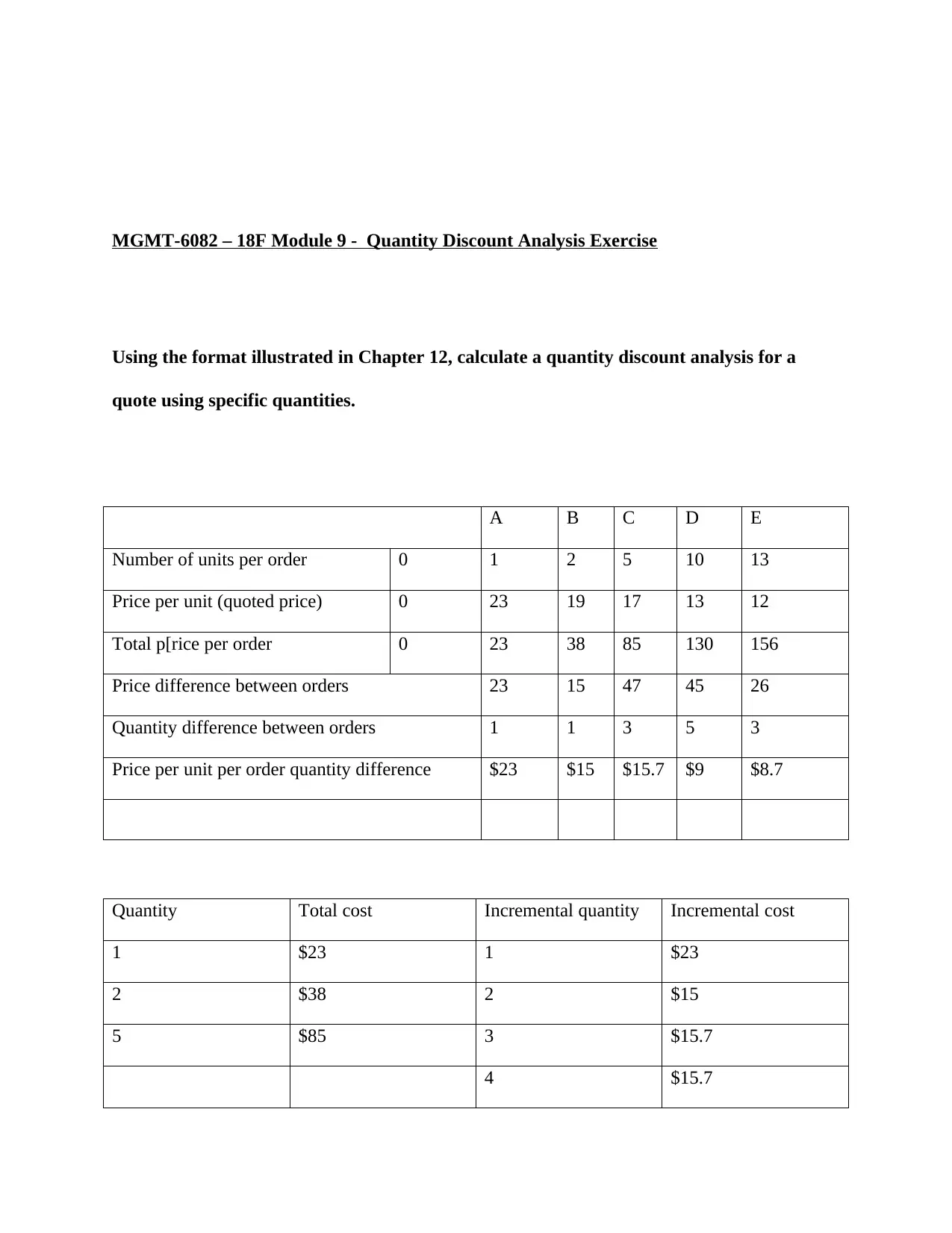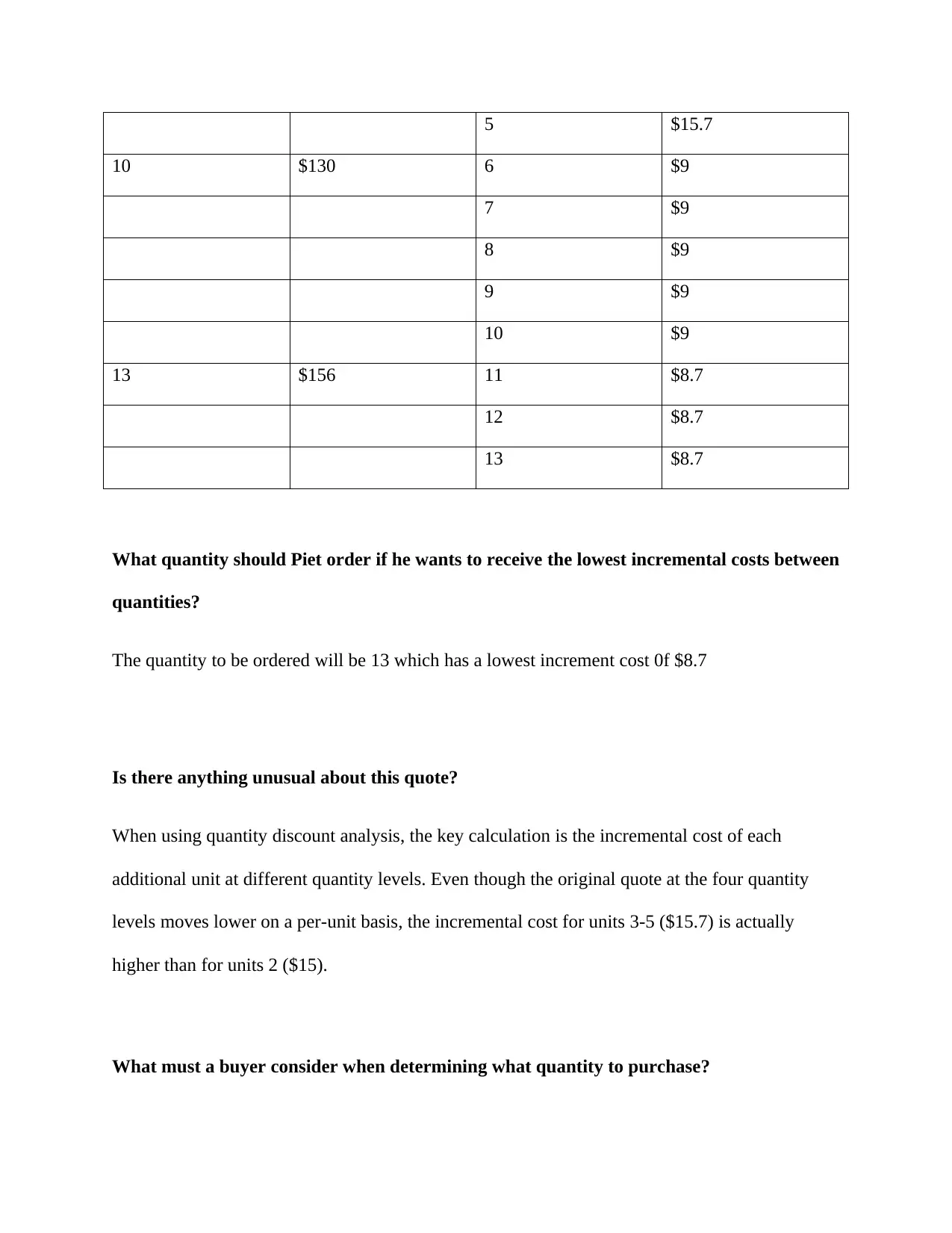MGMT-6082 Module 9: Analysis of Learning Curves and Quantity Discounts
VerifiedAdded on 2021/10/19
|5
|701
|123
Homework Assignment
AI Summary
This assignment solution for MGMT-6082, Module 9, presents a detailed analysis of learning curves and quantity discounts. The first part calculates the average labor per unit based on cumulative total hours, determines the learning rate (90% in this case), and discusses the implications of learning curve gains, highlighting that intense improvement is realized early in production. It differentiates between learning and experience curves, emphasizing the learning curve's role in purchase volume consolidation. The second part performs a quantity discount analysis, calculating total and incremental costs for different order quantities. It identifies the optimal order quantity based on lowest incremental cost, addresses an unusual aspect of the quote, and outlines the buyer's considerations for determining the purchase quantity, referencing Monczka et al. (2015). The assignment provides a comprehensive understanding of these critical business concepts.
1 out of 5












![[object Object]](/_next/static/media/star-bottom.7253800d.svg)